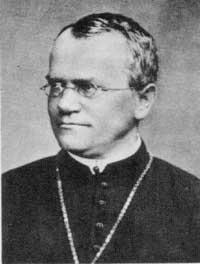Gregor Mendel
This Austrian botanist and religious saw the first light in Heinzendorf in 1822. His parents were peasants and educated his son in the love of nature. When he was a fervent child many hours ago in the orchard of his home. This hobby allowed Mendel to carry out a discovery that is later based on genetics.
He completed his first studies in Leipnik and Troppau. Four years after entering the order of the Augustinians in 1843, he took the priest, taking the name of Gregory. In 1851 he was sent to the University of Vienna to study mathematics and sciences. He only obtained a second degree, among other things because he failed to overcome biology. He taught at the school of Brünn between 1849 and 1863, where he channeled his experiments.

He carried out his first experiments on the hybridization of peas in the convent garden from 1857 and collected his results in the series of articles Experiments on hybrids from 1866. Although the source of the experiments were the peas raised in the garden of the convent, Mendel knew well the theories of Darwin, which described that it could have direct relation with the development of the species.
In the orchard, he planted seeds of dwarf and tall peas. He discovered that all the descendants of the dwarf peas were dwarf peas. However, the high seeds of peas simultaneously gave high peas and dwarfs. Surprised by the results of the experiments, Mendel turned more by mixing seeds of dwarf and tall peas. In the generations after the mixture, dwarf peas and tall peas appeared in different proportions. According to Mendel, when two different characteristics are mixed they are not totally matched and the particularities of each of them are preserved.
Today we put forward in another way the experiments carried out by Mendel. On the one hand, it is said that a hereditary characteristic is controlled by a pair of alleles and that alleles are separated into reproductive cells. On the other hand, it is fully assumed that the alleles that define each character are distributed independently to gametes and are combined between them. In other words, the result of experiments with peas are the basic laws of inheritance and, in honor of its discoverer, they are known as Mendel Laws.
Mendel's finding had no common echo among scientists of the time. This deeply lamented Mendel and decided to stop investigating. With the decision taken, he was appointed head of the convent and since then he only took care of these tasks.
In 1900 the botanist De Vries discovered the works of Mendel. It was presented immediately at the scientific meeting points and unanimously approved the excellent work done by the anonymous priest.
By then it was too late. Gregor Johann died in solitary and desperate convent of Mendel Brünn in 1884, 16 years before science canceled his debt with him.
Buletina
Bidali zure helbide elektronikoa eta jaso asteroko buletina zure sarrera-ontzian











